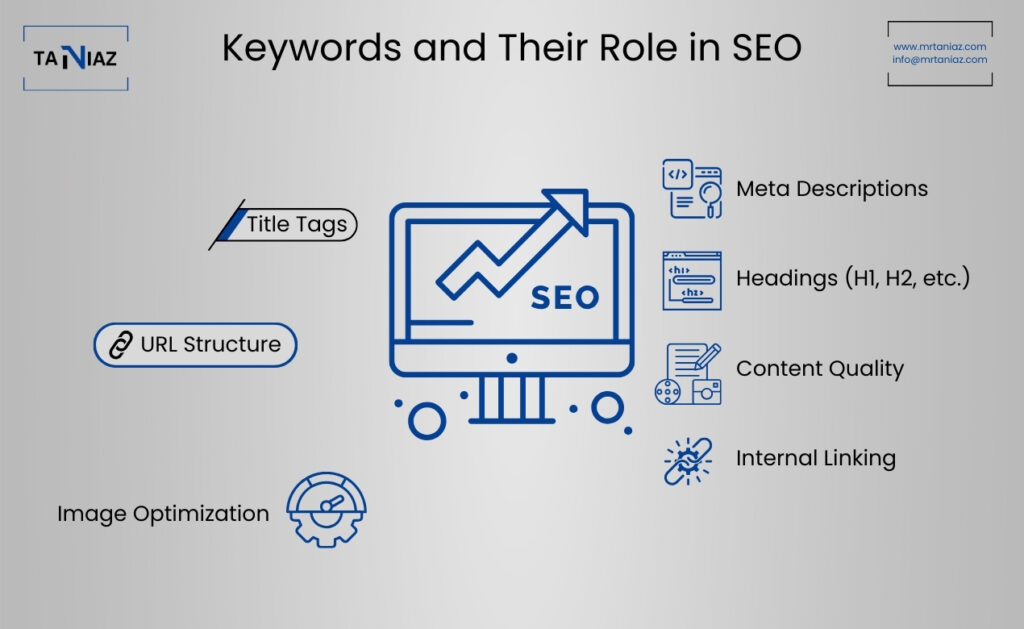On-page SEO refers to optimizing elements within your website to improve its visibility on search engines and attract more organic traffic. It focuses on factors you can control directly, ensuring your website is both user-friendly and search-engine-friendly.

Key Elements of On-Page SEO:
1. Title Tags:
The clickable headline that appears on search engine results pages (SERPs). It should include your target keyword and be under 60 characters.
2. Meta Descriptions:
A summary of a webpage is displayed below the title tag in search results. It should also include keywords and entice users to click.
3. Headings (H1, H2, etc.):
Organize content using headings and subheadings that incorporate relevant keywords.
4. URL Structure:
URLs should be short, descriptive, and include keywords.
5. Content Quality:
Create unique, valuable, and keyword-optimized content that addresses user intent.
6. Internal Linking:
Link to other pages on your site to guide users and search engines through your content.
7. Image Optimization:
Use descriptive filenames, alt text, and compressed image sizes to improve performance.
Good On-Page SEO enhances user experience and increases the likelihood of higher rankings on SERPs.
Knowledge Test
Answer these 5 MCQs:
1. What is the purpose of a title tag in On-Page SEO?
a) To decorate the website
b) To provide a clickable headline in search results
c) To describe the content of an image
d) To link external websites
2. What does an optimized URL include?
a) Long strings of random characters
b) Keywords and descriptive text
c) Only numbers
d) Blank spaces
3. Why is internal linking important for On-Page SEO?
a) It connects users to external sites
b) It guides users and search engines through your content
c) It replaces title tags
d) It is used to block search engines
4. What is alt text used for?
a) Describing images for visually impaired users and search engines
b) Adding decorative text to a website
c) Replacing meta descriptions
d) Creating internal links
5. Which of the following is NOT part of On-Page SEO?
a) Title tags
b) Backlink building
c) Meta descriptions
d) Image optimization
Answers of 5 MCQs.
Answer 2: b) To provide a clickable headline in search results
Answer 2: b) Keywords and descriptive text
Answer 3: b) It guides users and search engines through your content
Answer 4: a) Describing images for visually impaired users and search engines
Answer 5: b) Backlink building
Arrange Statements:
Arrange these steps of On-Page SEO in the correct order:
a) Optimize the title tag and meta description.
b) Create high-quality, keyword-optimized content.
c) Add internal links to guide users and search engines.
Correct Order:
- a) Optimize the title tag and meta description.
- b) Create high-quality, keyword-optimized content.
- c) Add internal links to guide users and search engines.
Questions to Choose Correct Answers:
1. Which element helps search engines understand the purpose of an image?
a) Alt text
b) Title tags
c) Meta descriptions
2. Which heading tag is typically used for the main title of a page?
a) H1
b) H3
c) H6
Answer of 2 Questions.
Answer 1: a) Alt text
Answer 2: a) H1
Assignment for Students:
Assignment for Students:
- Choose a topic (e.g., “Healthy Recipes”) and write a title tag, meta description, and URL for a blog post about it.
- Create an outline with at least 3 headings (H1, H2, H3) for the content.
